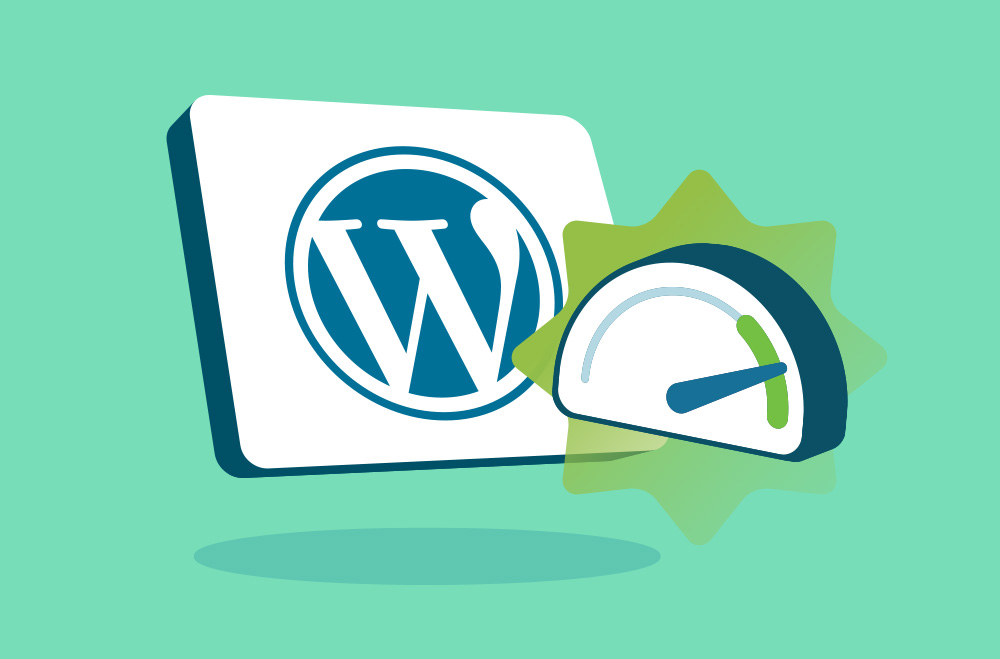


Dans l'environnement numérique actuel en constante évolution, la performance, l'expérience mobile et l'adaptabilité des sites web sont cruciales. Alors que les entreprises s'efforcent d'assurer la pérennité de leurs sites web et de répondre aux besoins des utilisateurs sur tous les appareils, WordPress headless s'impose comme une solution incontournable en 2025.
Cet article examine les principaux avantages, défis et tendances émergentes qui façonnent WordPress headless et la conception axée sur le mobile. En explorant comment cette approche améliore la flexibilité et les performances, les entreprises peuvent mieux se positionner pour répondre aux exigences d'un paysage numérique en constante évolution.

WordPress headless est une approche de développement moderne dans laquelle le système de gestion de contenu (WordPress) est séparé de l'interface utilisateur avec laquelle les utilisateurs interagissent. Dans les configurations traditionnelles, WordPress gère à la fois le stockage et la présentation du contenu. En revanche, dans une configuration headless, WordPress est seul responsable de la gestion du contenu, tandis qu'une interface utilisateur distincte, développée à l'aide de frameworks comme React, Vue.js ou Angular, fournit ce contenu aux utilisateurs via des API.
Cette séparation offre une flexibilité inégalée aux développeurs comme aux entreprises. En 2025, l'architecture headless gagne du terrain, car elle permet des sites web plus rapides et plus dynamiques, mieux adaptés à la conception mobile et à la diffusion de contenu omnicanal. Avec l'essor des appareils intelligents, des objets connectés et des technologies émergentes comme les applications web progressives (PWA), WordPress headless offre une solution évolutive et pérenne pour les plateformes riches en contenu.
In 2025, businesses are under growing pressure to deliver fast, personalized, and device-agnostic digital experiences. Headless WordPress has emerged as a powerful solution to meet these demands, offering developers and brands the flexibility to use cutting-edge frontend technologies while leveraging WordPress's content management strengths. By decoupling the backend from the frontend, organizations can provide tailored experiences across websites, mobile apps, digital displays, and IoT devices without being restricted by traditional WordPress theming.
L'importance croissante de la conception mobile et la demande croissante de diffusion de contenu omnicanal ont poussé de plus en plus de développeurs à adopter des architectures headless. Avec un écosystème croissant d'API, de frameworks front-end et d'outils d'optimisation des performances, WordPress headless est désormais une mise à niveau essentielle pour pérenniser les sites web.
Key reasons why headless WordPress is gaining popularity in 2025:
WordPress headless offre de nombreux avantages pour répondre aux exigences du développement web moderne de 2025. Les sites web étant censés être plus rapides, plus réactifs et capables de diffuser du contenu sur plusieurs plateformes, cette architecture découplée permet aux développeurs et aux entreprises de répondre à ces attentes avec plus de précision et de flexibilité. Elle s'inscrit parfaitement dans les principes du mobile first, du développement API first et du besoin croissant de solutions numériques évolutives et pérennes.
En séparant le front-end du back-end, les entreprises peuvent améliorer considérablement leurs performances tout en maîtrisant la présentation du contenu. Cette approche est particulièrement adaptée aux équipes travaillant avec des frameworks JavaScript avancés ou gérant du contenu sur plusieurs appareils et interfaces. La flexibilité offerte par WordPress headless permet aux entreprises de rester compétitives dans un environnement numérique en constante évolution.
Key benefits include:
Despite its many advantages, headless WordPress has technical and strategic challenges that can complicate implementation, especially for businesses new to decoupled architectures. One of the biggest hurdles is the increased complexity of the development process. Unlike traditional WordPress, where themes handle content and presentation, headless WordPress demands a strong understanding of APIs and modern frontend frameworks like React or Angular. This requires a skilled development team that can integrate the two ends seamlessly.
Au-delà de la courbe d'apprentissage technique, les organisations doivent également prendre en compte les implications à long terme en termes de maintenance, de coûts et de convivialité. Gérer des systèmes front-end et back-end distincts augmente les frais généraux et peut engendrer des inefficacités si la gestion n'est pas adéquate. De plus, garantir un référencement efficace et proposer une interface conviviale aux rédacteurs de contenu non techniques peut s'avérer difficile sans une planification et des outils réfléchis.
Key challenges include:
In 2025, mobile-first design will no longer be optional; it will be a necessity. With mobile traffic now accounting for most website visits, WordPress themes must be designed with smartphones and tablets in mind from the outset. Traditional themes often struggle to deliver seamless mobile experiences, especially when balancing desktop design with responsive behavior. This shift in user behavior has led to a growing demand for themes and frameworks that prioritize mobile experience as the foundation of the user interface.
Headless WordPress enhances this approach by allowing developers to fully control the frontend design, free from the constraints of legacy WordPress themes. Developers can craft lightweight, mobile-optimized interfaces using modern JavaScript frameworks, resulting in faster load times and more interactive experiences. This flexibility makes it easier to meet user expectations while improving engagement, usability, and performance across devices.
Key advantages of mobile-first design in headless WordPress:
In 2025, website performance will be a top priority for user engagement and classements SEO. With users increasingly accessing websites from mobile devices and expecting instant load times, slow performance can result in lost traffic and conversions. Headless WordPress addresses this challenge by decoupling the content management backend from the presentation layer, which enables developers to optimize performance independently and deliver faster, leaner frontends.
En exploitant des techniques de développement modernes comme la génération de sites statiques et la mise en cache périphérique, WordPress headless permet aux sites web de réagir rapidement sur tous les appareils. Cette approche minimise la charge du serveur et améliore le temps de réponse au premier octet (TTFB), offrant ainsi une expérience nettement plus rapide aux utilisateurs du monde entier.
Key performance enhancements with headless WordPress include:
Alors que l'écosystème WordPress headless arrive à maturité en 2025, les entreprises souhaitant adopter cette architecture doivent faire plus que découpler le front-end du back-end. La réussite repose sur le respect des bonnes pratiques garantissant performance, évolutivité et maintenabilité à long terme. Chaque décision, du choix de la pile technologique appropriée à l'optimisation du processus de diffusion de contenu, a un impact direct sur la capacité de l'implémentation headless à répondre aux besoins de l'entreprise et des utilisateurs.
A strong implementation starts with thoughtful planning. Teams should consider balancing modern development tools with usability for non-technical content editors. Security, SEO, and performance optimization must also be built into the project from the beginning, not bolted on afterward. A structured approach helps prevent unnecessary complexity while keeping the system flexible and adaptable to future growth.
Key best practices include:
As we move into 2025 and beyond, headless WordPress is evolving from an experimental architecture into a mainstream approach for développement web moderne. This shift is driven by a growing demand for ultra-fast digital experiences, personalization, and the ability to simultaneously deliver content to multiple platforms. Businesses recognize that traditional WordPress limits innovation, while headless solutions open the door to endless possibilities, from interactive mobile apps to voice-controlled devices.
We expect to see headless WordPress integrated more closely with emerging technologies like artificial intelligence and edge computing. Developers will continue to leverage static site generation (SSG) and Progressive Web Apps (PWAs) to deliver better offline experiences and boost performance across low-bandwidth environments. These trends signal a more dynamic and user-focused digital future, where WordPress remains a powerful CMS while becoming increasingly flexible, decoupled, and intelligent.
Future trends include:
WPGraphQL est le plugin GraphQL leader pour WordPress. Il permet aux développeurs d'interroger les données dont ils ont besoin depuis WordPress grâce à une API flexible et moderne. Il est idéal pour les configurations headless utilisant des frameworks JavaScript comme React ou Vue.js.
Key Features:
WP REST Cache accélère les réponses de l'API REST dans WordPress en les mettant automatiquement en cache. Ce plugin est idéal pour les environnements headless où les applications front-end dépendent fortement des appels d'API.
Key Features:
Le mode sans tête désactive la sortie front-end de WordPress et redirige les utilisateurs vers votre application front-end découplée. Cela vous permet de réserver le back-end exclusivement à la gestion de contenu.
Key Features:
ACF to REST API étend l'API REST native pour inclure les champs créés avec le plugin populaire Advanced Custom Fields (ACF), ce qui facilite la diffusion de contenu structuré sur votre frontend.
Key Features:
Faust.js de WP Engine aide les développeurs à créer des interfaces React sur WordPress sans tête en utilisant un routage moderne et SSR.
Key Features:
Navire brillant specializes in WordPress and WooCommerce development and has a proven track record of helping businesses transition to headless architecture. Suppose you're considering a decoupled frontend, mobile-first design, or improved omnichannel performance in 2025. In that case, Bright Vessel offers the strategic insight, technical expertise, and maintenance support to bring your project to life.
Whether you're looking to modernize your stack with React, implement a headless WooCommerce storefront, or need a high-performance WordPress backend, the Bright Vessel team can help you execute confidently, focusing on performance, SEO, and future scalability.

"*" indicates required fields

"*" indicates required fields

"*" indicates required fields